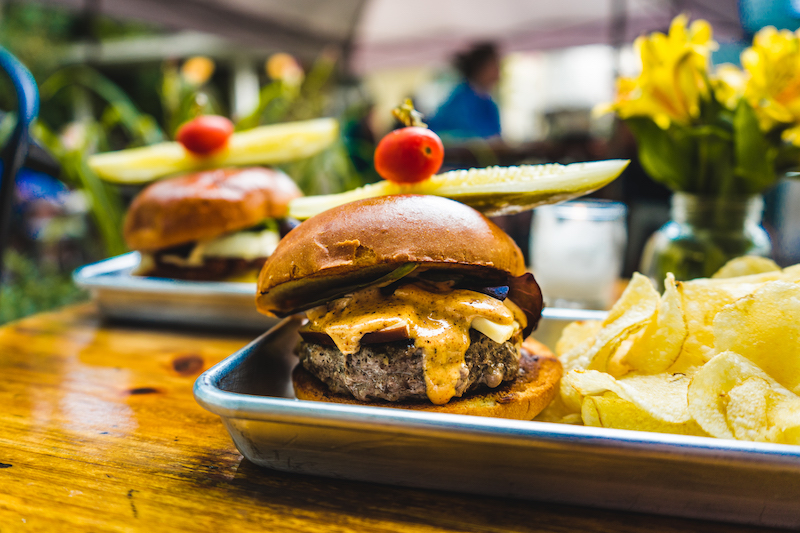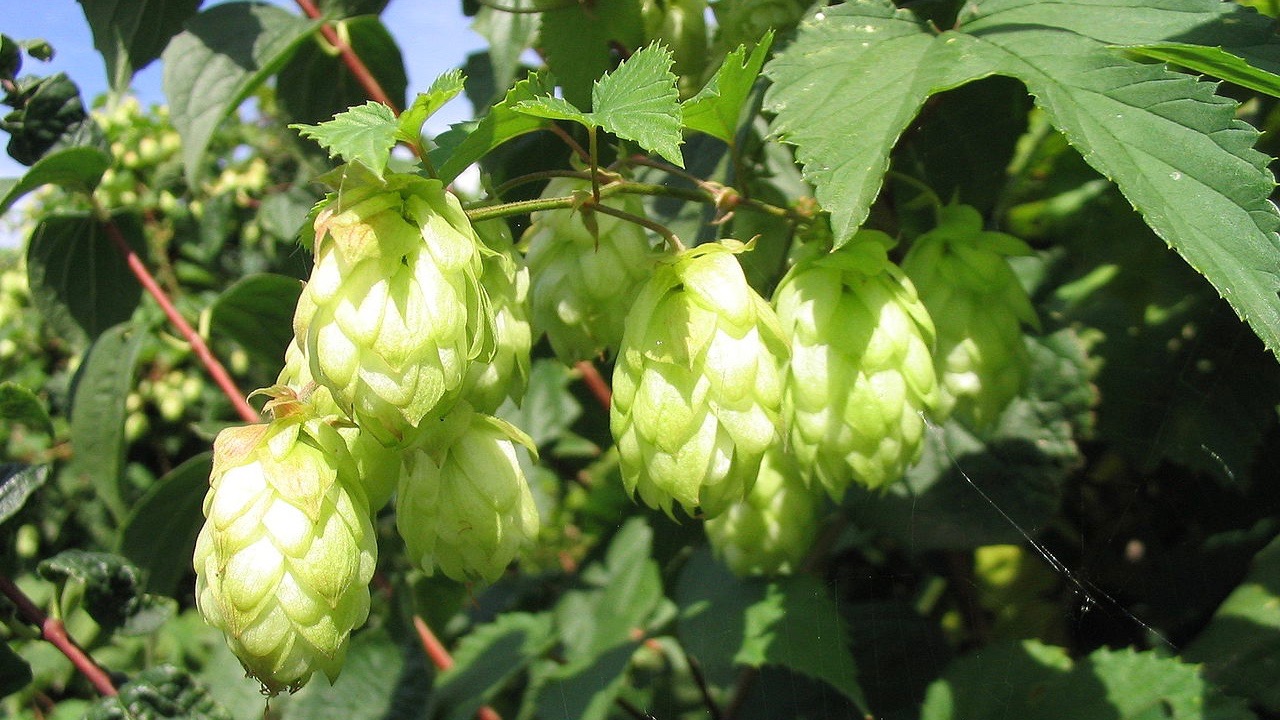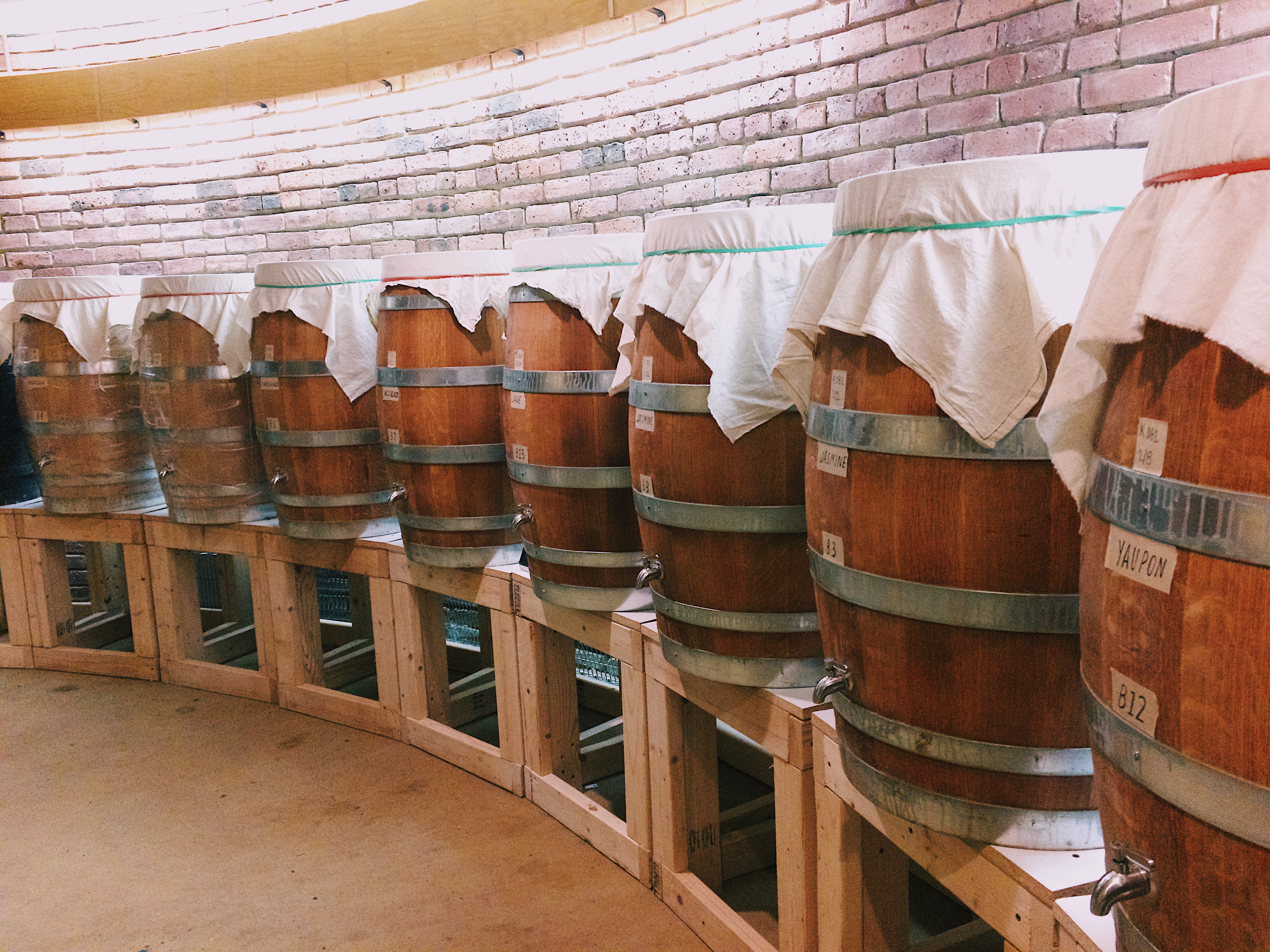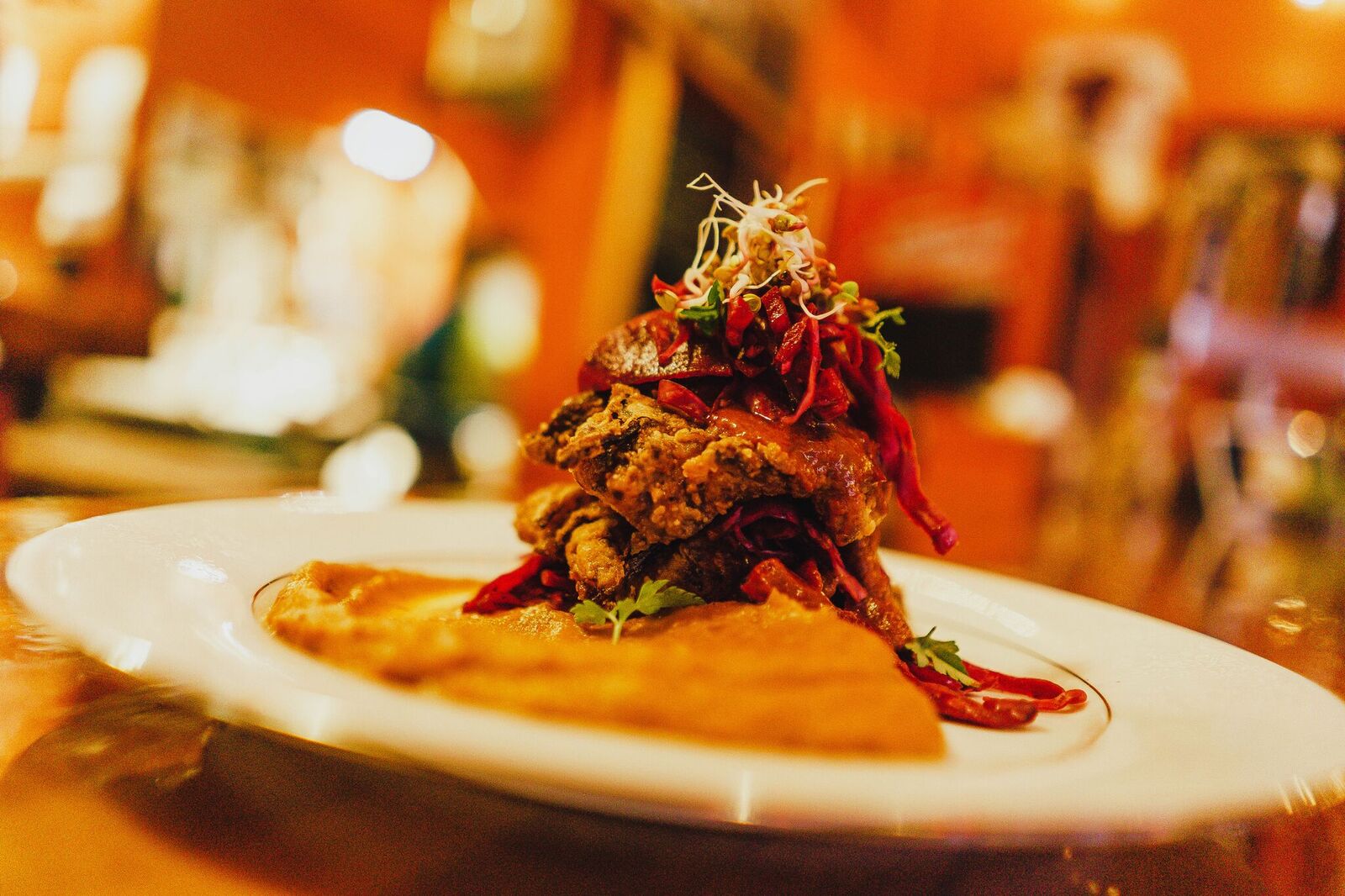This article first appeared in The Alt on August 15, 2017.
Photos by Kiki Vassilakis
The hill that serves as The Hill at Muza’s namesake is buttressed by a stone wall—part of that wall has likely existed for more than a century, part of Troy’s long architectural history, and the other, newer addition was assembled methodically over a decade by Jan Siemiginowski, who founded Muza with his wife Alicja. The Siemiginowskis immigrated to the area from Poland in the ‘70s. The newer part of the wall stands out—not as worn, not as compacted by time; fresh but perhaps a little out of place. Muza, a European eatery that focuses on Polish food and is known for its kielbasa and schnitzel, was opened 10 years ago. The space, perhaps appropriately, gives off the comfortable feeling of eating in your grandparents’ living room. The Siemiginowskis and their daughter can regularly be found working in the kitchen, serving and chatting with customers.

The Hill at Muza would never be mistaken for anyone’s living room and yet it is welcoming—the outdoors space designed to serve as a traditional European beer garden is warmed and lit at night by a host of tall silver heaters, the bar, tables and awnings are all wooden, modern sleek. And while Muza’s menu is traditional and in many ways serves as comfort food for regulars The Hill at Muza, which opened in 2015, takes those familiar European favorites and makes them hip, accessible bar food. “We don’t want anything on the menu that people can’t eat with their hands,” says Adam Siemiginowski, son of Jan and Alicja, who runs The Hill at Muza.

I’ve come to Muza on a Thursday afternoon to talk to Adam about The Hill and how it was birthed from Muza. My family has frequented Muza almost since its inception—my mother grew up in a Czech and German household and tells stories of making noodles with her grandmother and hanging them on the clothesline to dry, she makes sauerbraten routinely and is always happy to stuff a cabbage. My wife loves Muza’s homemade pierogis and potato pancakes. No one has to twist anyone’s arm to make the trip to Muza. But with a three-year old in the house we’d never made the short walk up the steps to The Hill.

On Thursday, I’m greeted by Jan, who quickly puts a Czech beer in my hand and mentions that the next generation always has it easier than the last—his accent is thick, his gaze intense. He quickly becomes emotional when thinking about the past. And then Adam is there: young, relaxed and calm. We go up to the Hill where we sit at a table with a view of The Hill’s waterfall—next to a magenta building that may in the future be opened as an expansion to The Hill. What becomes clear quickly is that both Adam and Jan never stop thinking about the future.

Adam spent seven years at Procter & Gamble before he decided to return home to invest full-time in the family business—The Hill is his project. He recalls his father regaling him with the story about the first time he ever came in contact with Coke and Crest toothpaste (made by Procter & Gamble): “He told us how cool they were and that they’re the best in the world.”
So while Muza is a great place for a date or a comfortable family meal, The Hill functions as a hip beer hall with a relaxed outdoor setting—one that stands out as unique to anything else in the Capital Region.
Adam was in college in Connecticut when his family started Muza. He was involved in some of the initial demolition work, rehab and menu planning but he was focused on his career at Procter and Gamble.
“When I moved up to Troy from New York I thought I was only going to stay for a little while and go back to New York,” Adam explains. “But I saw the potential, how cool Troy was starting to be and thought we could do something unique to fit into the region and take what Muza is credible for and put a whole new spin—bring a new element out of the family restaurant while respecting the pallet, ingredients and prep methods.”
Adam says that an example of the combination of respect and experimentation is The Hill’s popular “euroburger.”
“You have that traditional pan-fried, all-beef cutlet but we put bread crumbs, onions and pickles inside it. We took grandma’s patty and did all sorts of stuff to make what it is today.”

Another menu item, the smoked-pork taco, may seem totally out of left field for a Polish-themed restaurant but it takes some traditional Central-European elements like dill and cream and adds it to the non traditional smoked pork. Another ubiquitous and delicious snack at The Hill comes in the form of the restaurant’s “Disco Balls,” which are repurposed potato pancake.

Adam has also been implementing his skills as a programmer that he used at Procter & Gamble into the back end of Muza and The Hill—optimizing temperatures for food and wine, tracking popular menu items and keeping the family focused on change and the future.
The Hill at Muza doesn’t just represent the vision of a first-generation immigrant who is capitalizing on the successes of his parents. It is the continuation of a plan that started when the Siemiginowskis purchased a set of buildings in Troy a decade ago.
“I wasn’t as involved in the initial purchasing as I was a kid but they had the foresight to buy all these buildings that were vacant 10 years ago–there was nothing happening—so that puts you off on a footrace that you have to finish,” says Adam. “From day one we had 12 seats with just one space. Things slowly started rolling and two years later we built an addition and 8 years after the project started is when this happened. From day one we’ve been planning to grow and we’ve got some other stuff in the works where it will be the same thing happening again in the next few years, right around here.”

I ask Adam about growing up as a first generation American—my father immigrated from England—the conversation turns to how decisions are made and Adam makes it clear that The Hill at Muza is his and that the entire family makes decisions about Muza. Just about then Jan returns smiling. I ask him if he wants to talk about what it was like coming to America—how it informed the construction of Muza. Instead he wants to commiserate, he wants to share his plans for the next phase of Muza. I turn my tape recorder off and we chat. Adam warns that the his father’s plans aren’t set in stone. Jan smiles and disagrees. The two spar and I’m sworn to secrecy. Later as I make my way down the stairs from the hill Jan reappears—he wants to show me something—he wants to talk about the future. I can’t say no.






Trackbacks/Pingbacks